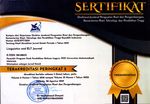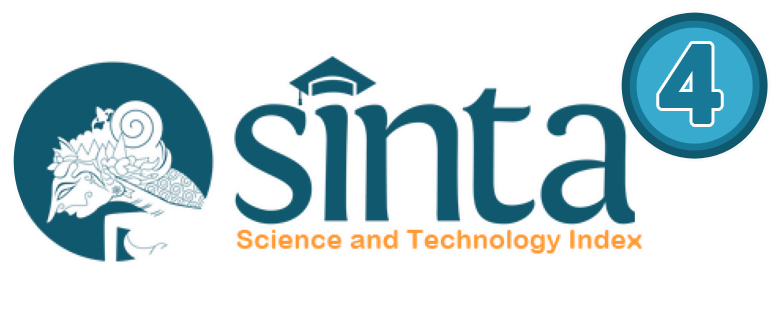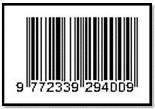The Use of Schematic-activation Strategy in Teaching Young EFL Learners Reading Comprehension
Abstract
Reading is one of the important skills that the students have to master. However, many students have difficulties in comprehending the reading text. To solve this condition, the researcher used schema activation strategy to help students understand reading comprehension. The purpose of this research was to investigate whether the use of schema activation strategy is effective or not in teaching reading comprehension at the second-grade students of MTs Tarbiyatul Mustafid in academic year 2017/2018. This study was quasi-experimental design using two classes were VIII B class was taken as an experimental class, and VII-A was taken as control class. The population of this research involved 60 students from the second grade in MTs Tarbiyatul Mustafid Batu Simpang. By using purposive sampling, the researcher took the students as a sample. In collecting the data, this study used pre-test, treatment, and post-test as the data collection procedure then followed by analyzing the data by using the t-test formula. Then the result of statistical analysis of t-test in this research was 2.85. It was higher than critical values for t- table in the degree of freedom (df) of 58 is 2.021(0.05%) and 2.704(0.01%). The researcher concludes that mean score before and after teaching by using schema activation strategy has a difference. It means the alternative hypothesis (ha) was accepted. The use of schema activation strategy in teaching reading comprehension at the second-grade students of MTs Tarbiyatul Mustafid Batu Rimpang is effective.
Keywords
Full Text:
PDFReferences
Aebersold, J. A., & Field, M. L. 1997. From Reader to Reading Teacher. Cambridge: Cambridge University Press.
Ajideh, Parviz. 2003. Schema Theory – Based Pre – Reading Tasks: A Neglected Essential in the ESL Reading Class. The Reading Matrix. Vol III No I, Pages: 2-8.
Alderson, J.C. 2000. Assessing Reading. Melbourne: Cambridge University Press.
Anderson, Mark. 1997. Text Type in English 2. Australia: Mackmillan.
Arikunto, S. 2014. Dasar-dasar Evaluasi Pendidikan. Jakarta: Bina Aksara.
Bransford, J. D. 2004. Schema activation and schema acquisition: Comments on Richard C. Anderson‟s remarks. In R. B. Ruddell, & N. J. Unrau (Eds.), Theoretical models and processes of reading (5th ed.) (pp. 607-619). Newark, DE: International Reading Association, Inc.
Brown, H. D. 2001. Teaching by Principles: An Interactive Approach to Language Pedagogy. White Plains, NY: Addison Wesley Longman, Inc.
Carrel, P. L. 1988. Interactive Text Processing; Implications for ESL/Second Language Reading. Cambridge: Cambridge University Press.
Citra, K. 2014, A thesis: Improving students reading comprehension using schema activation strategy: unpublished.
Clark, M and Silberstein, S. 1987. Toward a Realization of Psycholinguistic Principle in the ESL Reading Class, in Methodology TESOL. New York: New Bury House Publisher.
Cook, G. 1989. Discourse in ‘Language Teaching: A Scheme for Teacher Education’. Oxford: Oxford University Press.
Grabe, W. 1991. Current Developments in Second Language Reading Research. TESOL Quarterly.
Harmer, J. 2001. The Practice of Language Teaching (3rd Ed). London: Longman Group Ltd.
Hatch, E and Farhady. 1982. Research Design and Statistic for Applied Linguistics. London: New Bury House Production, Inc.
Hughes, A. 1991. Testing for Language Teachers. Great Britain, Glasgow: Cambridge University Press.
Mackay, R. 1979. “Teaching the information- Gathering Skill”. Reading in a Second Language. Mass: Newbury House Publishers.
Meyers, A. 2005. Gateways to Academic Writing: Effective Sentences Paragraph and Essay. New York: Longman.
Mikulecky, B. S. 1989. A Short Course in Teaching Reading Skills. New York: Addison – Wesley Publishing Company.
Moreillon, Judy. 2007. Collaborative Strategies for Teaching Reading Comprehension. Chicago: American Library Association.
Nunan, David (Ed). 2003. Practical English Language Teaching. New York: McGraw-Hill
Richards, J. C. and R. Schmidt. 2002. Longman Dictionary of Language Teaching and Applied Linguistics. London: Pearson Education Limited.
Shahan, T., and Lomax, R. G. 1986. An Analysis and Comparison of Theoretical Models of the Reading- Writing Relationship. Journal of Educational Psychology, 78, 116-123.
Snow, C. 2002. Reading for Understanding: Toward an R&D Program in Reading Comprehension. Santa Monica, CA: RAND Corporation.
DOI: https://doi.org/10.31764/leltj.v11i1.744
Refbacks
- There are currently no refbacks.
Copyright (c) 2019 Linguistics and English Language Teaching Journal

This work is licensed under a Creative Commons Attribution-ShareAlike 4.0 International License.
_____________________________________________________
Linguistics and ELT Journal
p-ISSN 2339-2940 | e-ISSN 2614-8633

LELTJ is licensed under a Creative Commons Attribution-ShareAlike 4.0 International License.
_____________________________________________________
LELTJ is abstracting & indexing in the following databases:
_____________________________________________________
LELTJ Editorial Office:













